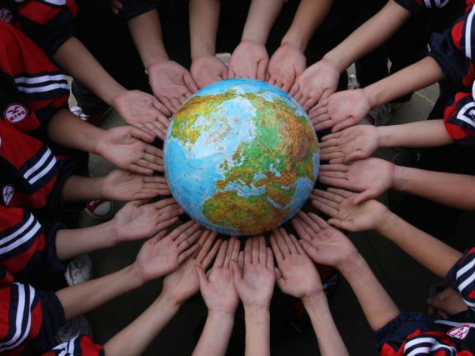
The original Earth Day was proposed at the 1969 United Nations Educational, Scientific and Cultural Organization Conference in San Francisco by peace activist John McConnell and supported by UN Secretary General U Thant to honor peace on earth and the first day of spring on March 21, 1970.
Earth Day was hijacked a month later by U.S. Senator Gaylord Nelson (D-WI) as a day for environmental and social injustice teach-ins on April 22, 1970 (Lenin’s birthday).
This year’s UN celebration, to be held in 192 countries, is titled “Mother Earth Day,” because according to the U.N. “Mother Earth” is a fairly common phrase: “Bolivians call Mother Earth ‘Pachamama’ and Nicaraguans refer to her as ‘Tonantzin.'”
Over the last 44 years Earth Day has often been hijacked by political opportunists and faux scientists, but it is great fun to look back and see just how wrong the original Earth Day environmental experts were about the science and the future:
- “Air pollution… is certainly going to take hundreds of thousands of lives in the next few years alone.” Paul Ehrlich, Stanford University biologist
- “The world has been chilling sharply for about twenty years. If present trends continue, the world will be about four degrees colder for the global mean temperature in 1990, but eleven degrees colder in the year 2000. This is about twice what it would take to put us into an ice age.” Kenneth Watt, Ecologist
- “Dr. S. Dillon Ripley, secretary of the Smithsonian Institute, believes that in 25 years, somewhere between 75 and 80 percent of all the species of living animals will be extinct.” Sen. Gaylord Nelson
- “We have about five more years at the outside to do something.” Kenneth Watt
- “Civilization will end within 15 or 30 years unless immediate action is taken against problems facing mankind.” George Wald, Harvard Biologist
- “Population will inevitably and completely outstrip whatever small increases in food supplies we make. The death rate will increase until at least 100-200 million people per year will be starving to death during the next ten years.” Paul Ehrlich
- “By… [1975] some experts feel that food shortages will have escalated the present level of world hunger and starvation into famines of unbelievable proportions. Other experts, more optimistic, think the ultimate food-population collision will not occur until the decade of the 1980s.” Paul Ehrlich
- “It is already too late to avoid mass starvation.” Denis Hayes, chief organizer for Earth Day
- “Demographers agree almost unanimously on the following grim timetable: by 1975 widespread famines will begin in India; these will spread by 1990 to include all of India, Pakistan, China and the Near East, Africa. By the year 2000, or conceivably sooner, South and Central America will exist under famine conditions… By the year 2000, thirty years from now, the entire world, with the exception of Western Europe, North America, and Australia, will be in famine.” Peter Gunter, professor, North Texas State University
- “Scientists have solid experimental and theoretical evidence to support… the following predictions: In a decade, urban dwellers will have to wear gas masks to survive air pollution… by 1985 air pollution will have reduced the amount of sunlight reaching earth by one half.” Life magazine, January 1970
- “At the present rate of nitrogen buildup, it’s only a matter of time before light will be filtered out of the atmosphere and none of our land will be usable.” Kenneth Watt
- “By the year 2000, if present trends continue, we will be using up crude oil at such a rate… that there won’t be any more crude oil. You’ll drive up to the pump and say,`Fill ‘er up, buddy,’ and he’ll say,`I am very sorry, there isn’t any.'” Kenneth Watt
Despite this gloom and doom, virtually none of the projections of the original Earth Day from 44 years ago have come to pass. The growing season across the northern hemisphere is expanding. This is mainly due to a slight warming trend and increased precipitation across the mid-to-high latitudes of the northern hemisphere (where most of the world’s crops are grown). Higher CO2 levels are also leading to more productive plants and contributing to an increasing global output of food products. The net effect has caused the planet to be truly “greening,” and life expectancy at birth is now the longest in history.
The original Earth Day founders absolutely got the science and their projections for the future wrong, but April 22, 2014 was a balmy day for well-fed people in 192 countries, perfect to have a really nice time celebrating “Pachamama.”
The author welcomes feedback and will respond to comments by readers.

COMMENTS
Please let us know if you're having issues with commenting.